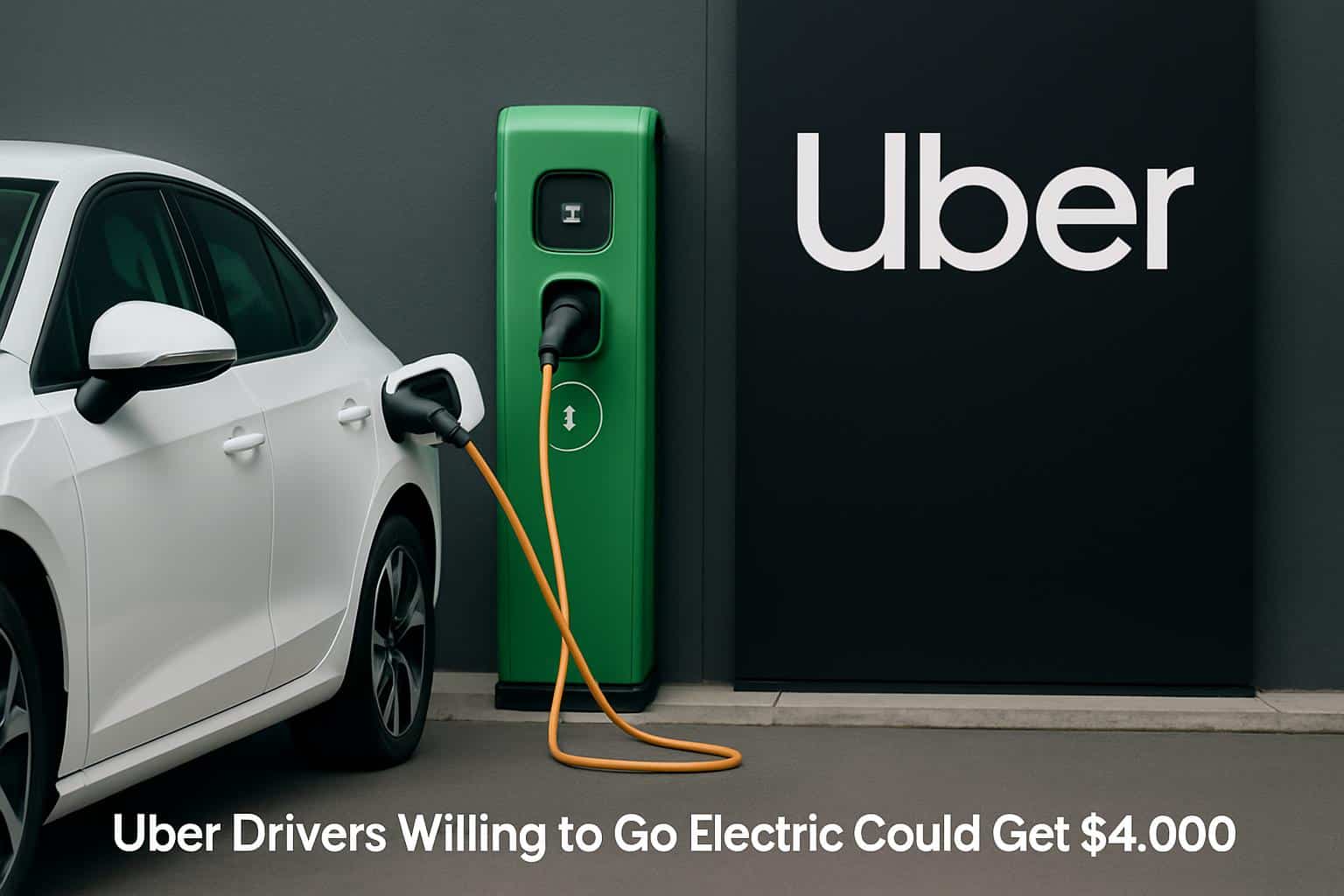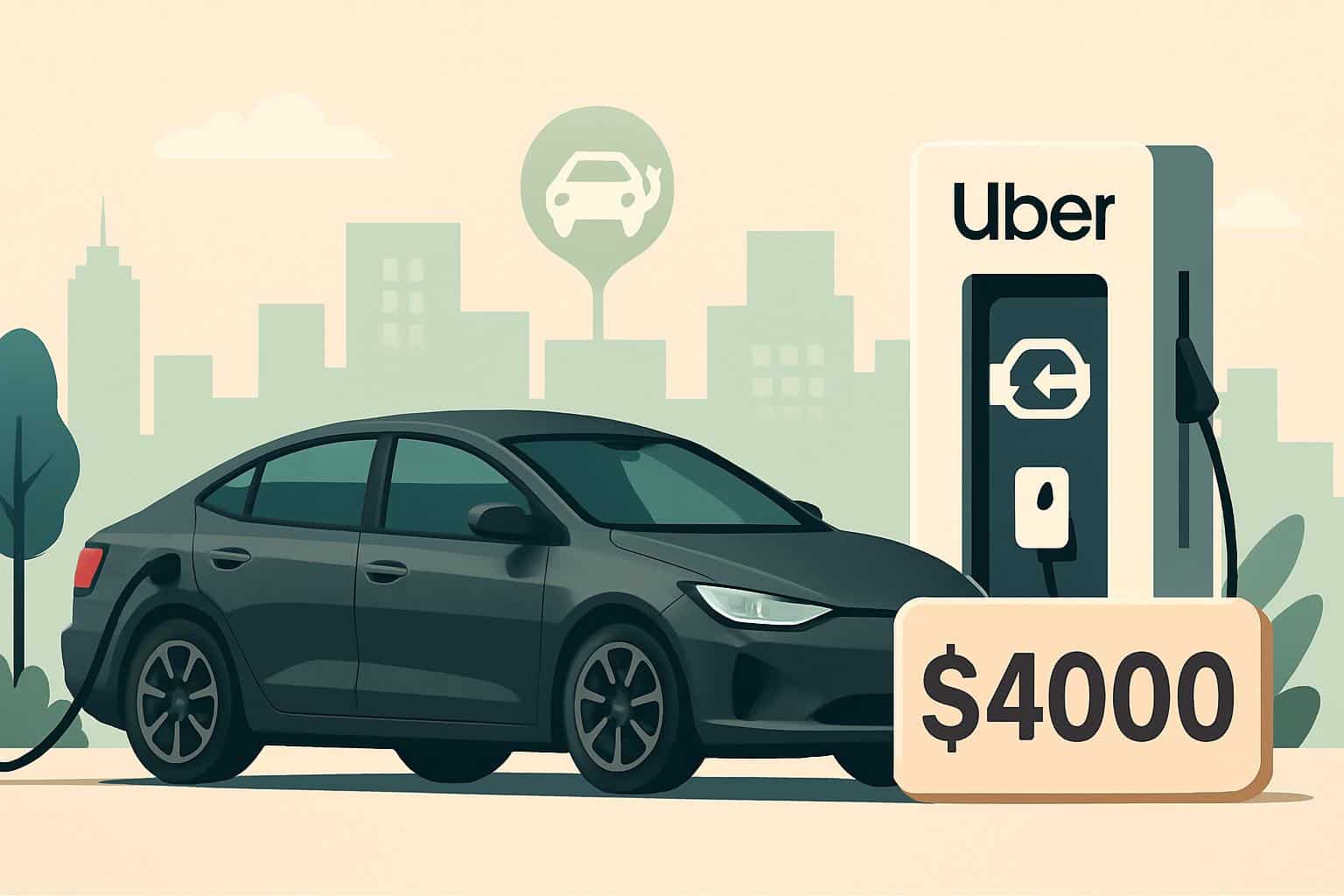Uber is adding a new incentive to accelerate the electric shift: Drivers in certain locales that are switching off gasoline-powered vehicles can receive a $4,000 grant after they make the switch. The company is also changing the branding of its low-emissions option from Uber Green to Uber Electric, a nod to an expanding fleet it says now exceeds 200,000 EVs globally.
As part of the grant, Uber is also offering a $1,000 discount on EV purchases through TrueCar, available to drivers in all 50 states. Interest savings, combined with cheaper operating costs for those who drive a lot of miles each year, could substantially alter the total cost of ownership for many drivers.

How Uber’s $4,000 Go Electric Grant Program Works
The $4,000 “Go Electric” grant is being offered to drivers in New York City, California, Colorado and Massachusetts initially. Uber says the money is available to drivers who have never had an EV on their account and are part of the Diamond tier of its Uber Pro program. Drivers apply before making a purchase and find out ahead of time if they qualify.
Uber set aside a specific pool to fund “thousands” of grants but has not said exactly how large the grant cap is. The $1,000 TrueCar used-EV discount is offered nationwide and can be combined with Uber’s grant, which could make late-model EVs far more accessible to full-time drivers.
Savings can compound when combined with state programs. Colorado drivers eligible for Clean Fleet Enterprise incentives and the Vehicle Exchange Colorado program could see combined support of nearly $15,000 at current program caps. Savings of $2,500 in California and Massachusetts incentives can drop that upfront hit significantly, but the total stackable savings are likely to be in the mid four to low five figures depending on your eligibility and vehicle choice.
Why Uber Is Supporting EV Adoption and Incentives
Uber has pledged to run a zero-emission platform in the U.S., Canada and large European cities by 2030, and to take those goals worldwide by 2040. The rebranding of the service to Uber Electric is a significant signal that its product is graduating out of pilot status and into more of the center lane of the app experience.
Policy pressure is building, too. The California Air Resources Board’s Clean Miles Standard mandates that ride-hail platforms lower their per-mile emissions and increase electric miles. In New York City, the Taxi and Limousine Commission is aiming for a zero-emission or wheelchair-accessible fleet by decade’s end. Bonuses like those offered by Uber help drivers bridge the gulf between regulatory timetables and day-to-day economics.
The Economics for Drivers Who Switch to Electric
EV total cost of ownership can still be compelling for high-mileage drivers. Electricity is generally cheaper per mile than gasoline, the U.S. Department of Energy’s Alternative Fuels Data Center says, and Consumer Reports has found that people who drive electric vehicles pay less for maintenance and repairs over a vehicle’s lifetime because there are fewer moving parts to break down or wear out — no oil to change as well.

Those per-mile savings add up fast for ride-hail drivers, who may often drive between 25,000 and 40,000 miles a year. Studies from groups like the International Council on Clean Transportation say that when drivers have access to affordable charging, particularly off-peak or at home, EVs can save them thousands of dollars in yearly fuel and maintenance costs compared with similar gas models.
First, price and charging access are still the main barriers. There are grants, point-of-sale discounts and stackable state rebates that can eat away the price gap, after which predictable charging at home or work reduces downtime. Uber’s pitch is that its grant, combined with local incentives, helps drivers climb over that initial hump.
Charging and Operational Support for Uber EV Drivers
Uber has been working to incorporate charging information into the driver app, as well as collaborating with charging networks on increased availability and pricing. As more stations integrate the North American Charging Standard connector, access grows for non-Tesla EVs, giving a little breathing room to plan a route on long shifts.
City and state investments are also fast-tracking infrastructure. New York City’s transportation agencies have expanded pilots for curbside and depot charging, while the California Energy Commission has funded thousands of fast chargers. From the driver’s perspective, what will make or break their desire to switch is reliable access to fast charging in and near airports and high-demand zones.
What Riders Get from the New Uber Electric Option
To help encourage demand, Uber is pushing a rider discount for Uber Electric trips — a limited-time code (GOELECTRIC20) that could save riders up to $8. The rider offer is designed to promote less noise and instant torque, while also serving as a sign that EV trips are now possible in key markets.
What to Watch Next as Uber Expands Electric Program
Decisive questions include how fast the grant pool is depleted, if Uber extends eligibility past the first four markets, and what strains state-level funding can withstand. Changes in federal and state incentives, monitored by the I.R.S. and energy agencies, can significantly affect payback periods for drivers.
Competition could intensify, too. Other ride-hail platforms have made similar 2030 electrification commitments and tried rolling out their own rewards, charging deals, and driver perks geared toward EVs. If Uber’s $4,000 grants move up adoption, look for rivals to follow suit — and for cities to press the accelerator on policies that favor electric miles.

